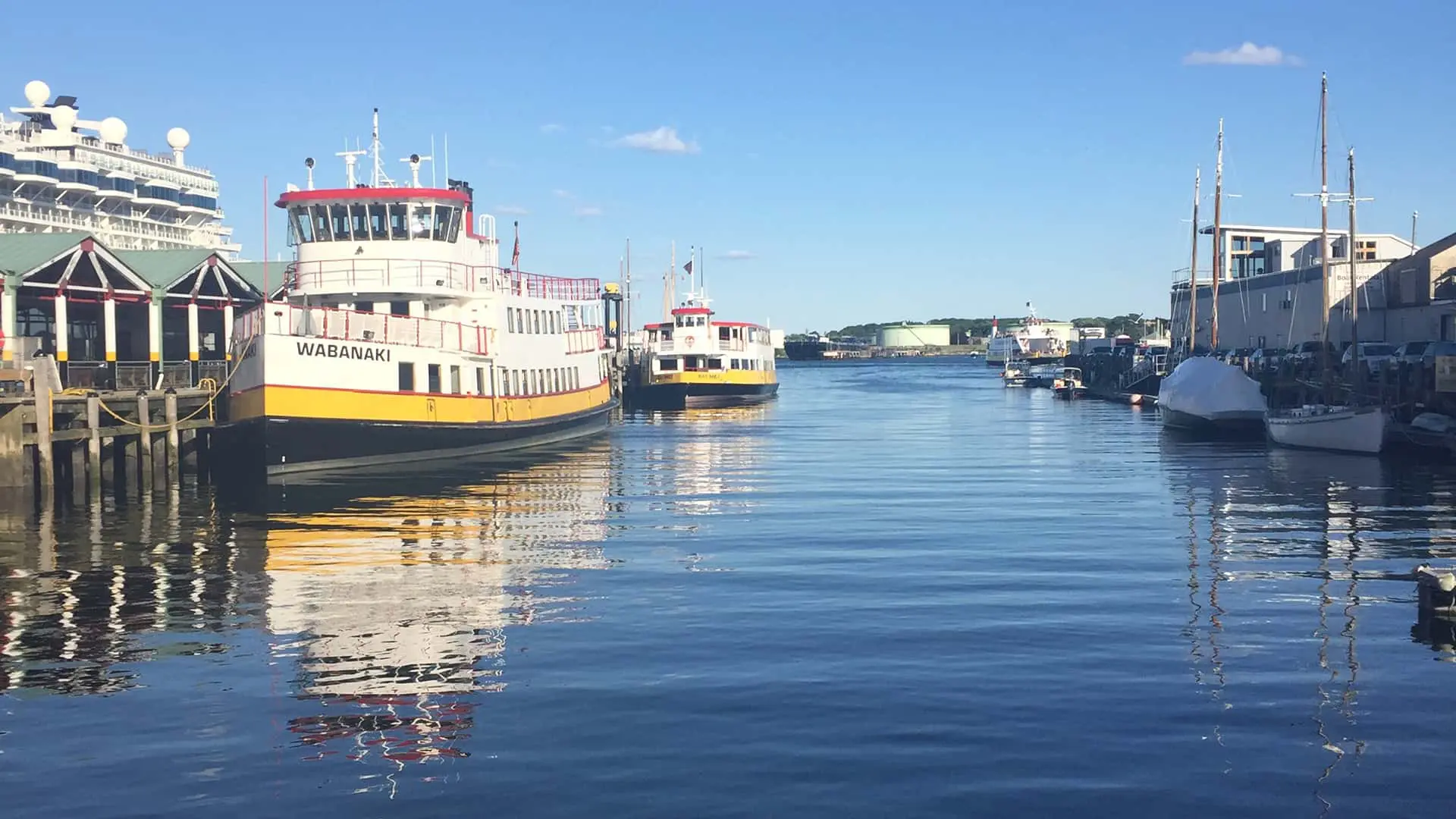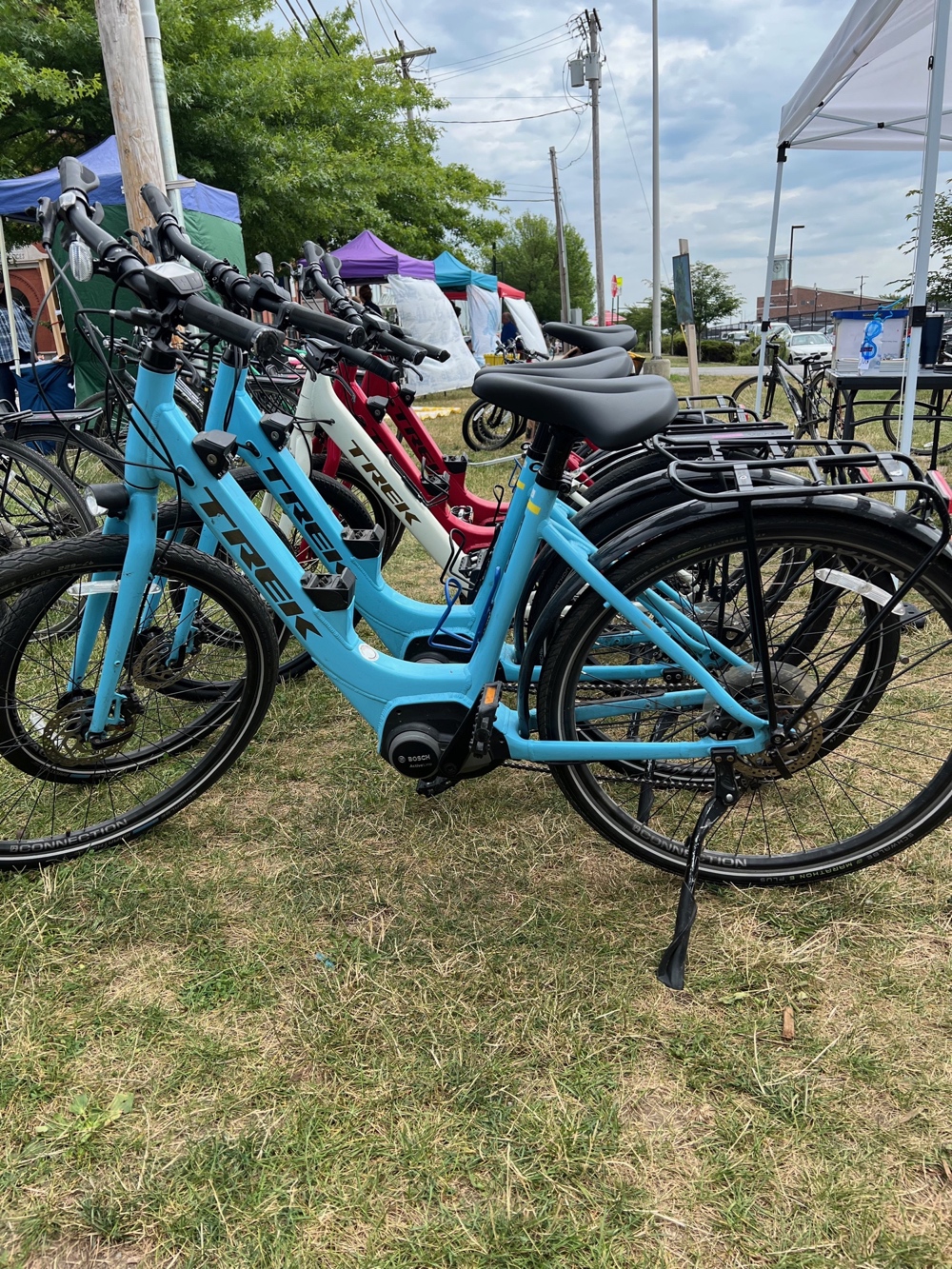At Summer Feet, we’re proud Portlanders with a passion for providing walking and cycling tours, be it in our home state of Maine, Canadian provinces like Quebec and Novia Scotia, and even stunning parts of Europe like Italy and North Macedonia.
But while this passion takes us further afield, our focus in this blog is closer to home!
Nestled in the picturesque Atlantic coastline, our bustling city is a living testament to its maritime past, where salty tales of seafaring adventures and maritime marvels await your eager ears.
Of course, it’s impossible to barely scratch the surface of so much history in a single blog! So we’ve taken a sweeping approach to cover centuries of events that have shaped Portland.
For a deeper dive into this topic, browse our range of Maine walking tours and bike tours in Maine!
And if you have any questions for us, please don’t hesitate to get in touch.
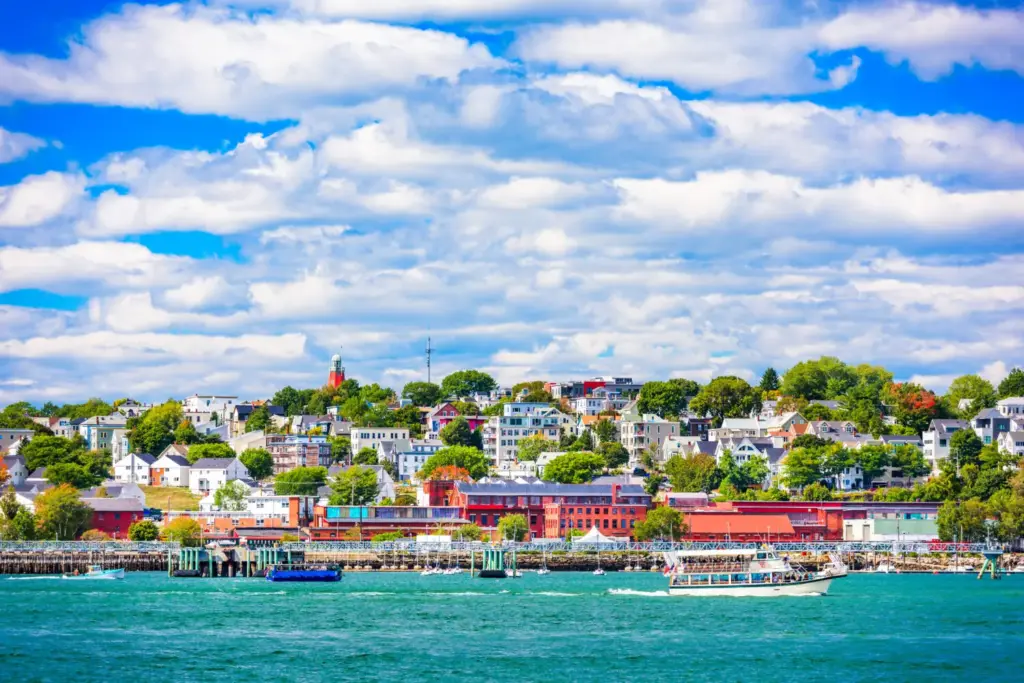
Portland, Maine, USA coastal townscape.
Portland’s Maritime History:
Early Exploration and Settlement
Before the tall ships and bustling piers, the land we now call Portland was embraced by Native American communities, painting a vibrant tapestry of cultures. They called the region Machigonne, or “Great Neck”.
But when European explorers arrived, they cast their eyes on the area’s natural deepwater harbor. Christopher Levett attempted the first settlement here in 1623, but it ultimately failed.
The peninsula was finally settled in 1632 as a fishing and trading village called Casco.
These years paved the way for a maritime saga that would span centuries. From the start, Portland’s destiny was intertwined with the sea.
To underline the importance of our city’s Old Port, we included it in our Guide to the Historic Landmarks of Portland, Maine.
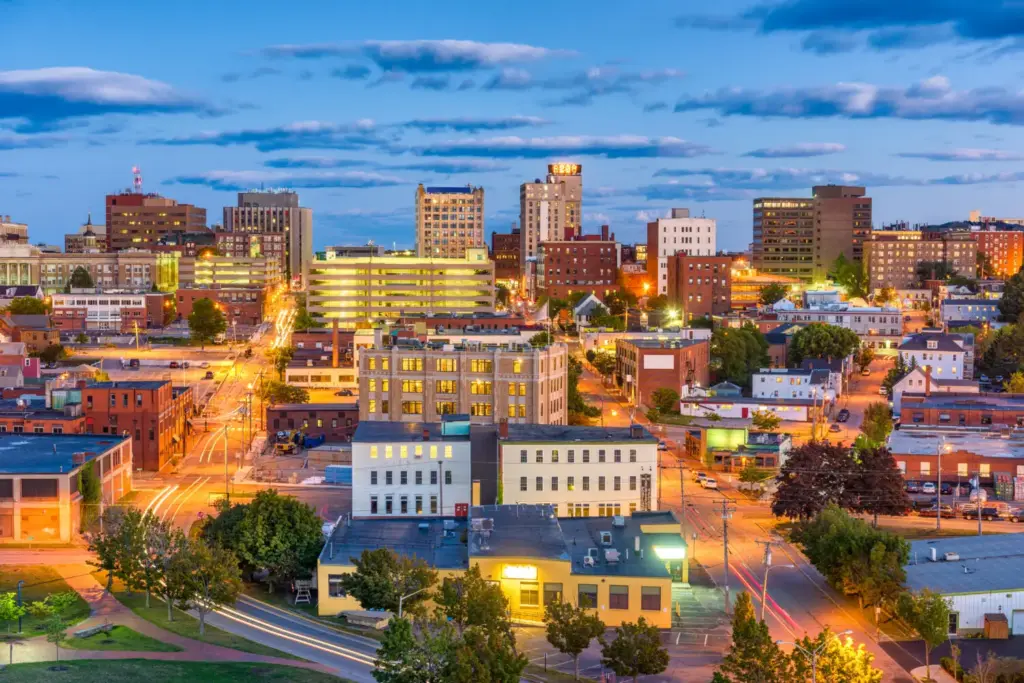
Portland, Maine, USA downtown cityscape.
The Age of Sail and Maritime Trade in Portland, Maine
Imagine a time when sails billowed against the horizon and bustling wharves echoed with the sounds of maritime trade.
The Age of Sail lasted from around the start of the 16th century until the mid-19th century. As an easily accessible, ice-free harbor, Portland’s maritime prowess grew from strength to strength.
Bustling merchant ships carried the region’s riches to far-flung corners of the globe.
Lumber, fish, and even crystal-clear ice from Maine’s frozen lakes found their way onto ships bound for distant lands, weaving a web of international trade that would shape Portland’s future.
By 1806, Portland was the sixth-largest port in the United States. But it grew significantly during the 19th century, with initial work on the harbor we know today taking place between 1836 and 1874.
As the closest four-season American deepwater port to Europe, the city of Montreal was pivotal in this era of development.
During the winter months, Montreal’s port would freeze over. To maintain its trade with Britain and Europe, Montreal transported goods via Portland. This relationship was also key in railroad development in this part of the continent.
If you want to explore Portland as part of a journey along the Maine coast, we think you’ll love our History and Harbors Tour. Our city is the starting point for this 6-day adventure.
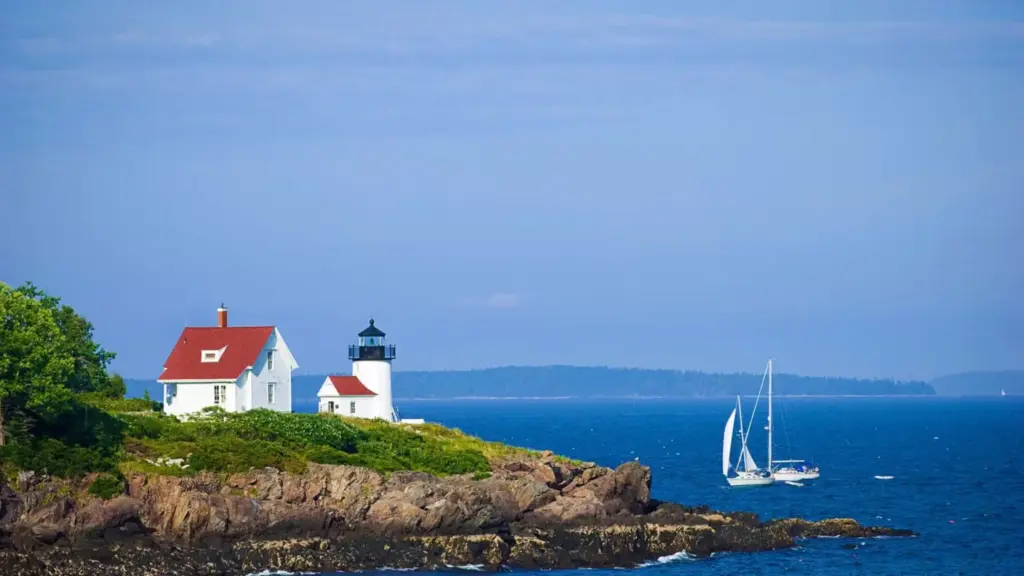
Portland’s Shipbuilding and Seafaring Tradition
Shipbuilding is another important chapter in the maritime history of Portland.
For example, the legendary ship Snow Squall was launched in Portland in 1851. This is the last remaining example of an American Clipper.
You can find a preserved section of the Snow Squall’s hull on display in the Maine Maritime Museum further up the coast in Bath.
South Portland is also synonymous with the iconic Liberty Ships. Built between 1941 and 1945, these vessels helped in the war effort and memorialized some of Maine’s most famous residents.
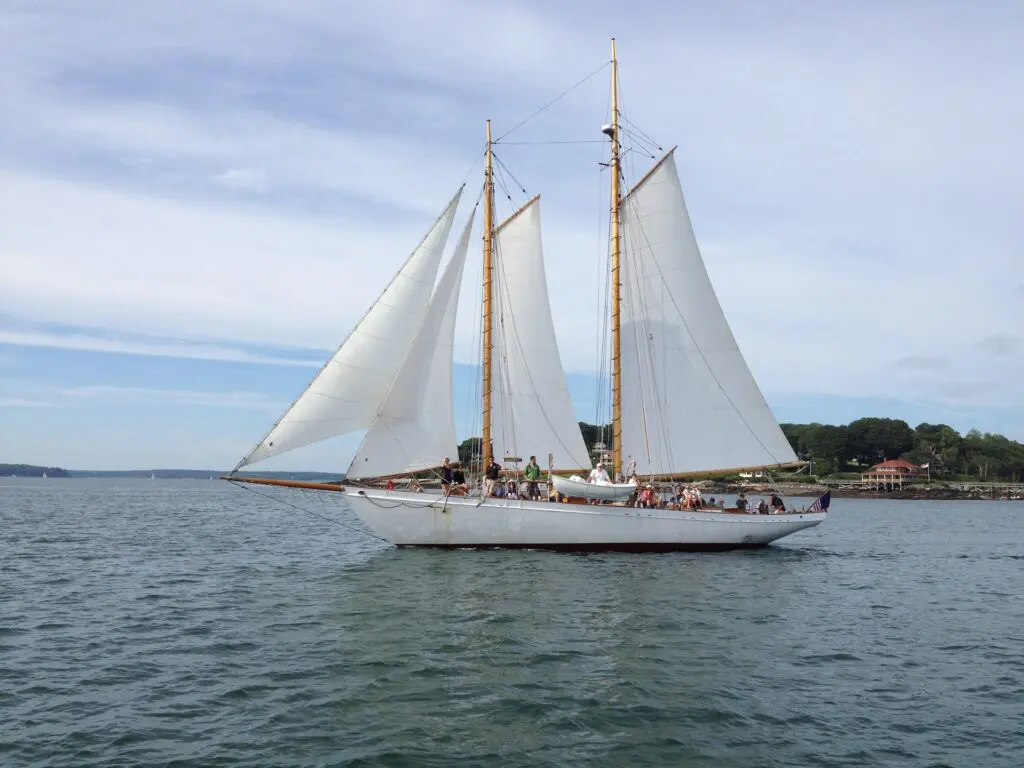
The Portland Gale and Maritime Disasters
An unfortunate part of maritime life is coming face-to-face with the raw power of Mother Nature.
One of the most famous examples in our part of the world is the infamous Portland Gale, a ferocious storm that passed through on November 26th and 27th, 1898.
The peak storm surge of 10ft came at Cohasset Harbor (MA), and Nantucket (MA) felt the force of hurricane-force winds.
The Portland Gale killed more than 400 people and sank more than 150 vessels. The most famous of the latter was the SS Portland, after which the storm is named.
This ship left India Wharf in Boston, heading for Portland, but she was lost at sea with everyone onboard.
Are you tight on time when you’re in Portland? Our Around the Peninsula tour is a great way to discover the heart of Portland in around 2.5 hours.
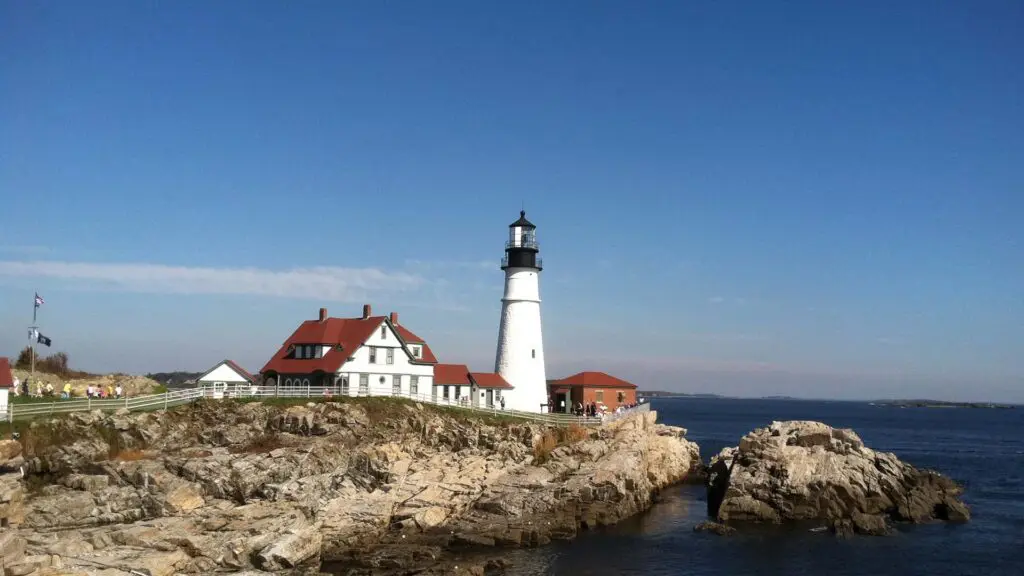
Portland Possesses a Charming Collection of Lighthouses
Maine is renowned for its lighthouses, and you can find six of them in and around the city of Portland:
- Portland Head Light
- Portland Breakwater Light (Bug Light)
- Two Lights
- Ram Island Ledge Light Station
- Spring Point Ledge Lighthouse
- Halfway Rock Light Station
Unfortunately, unless you’re on Bailey’s Island or a boat, you won’t be able to see Halfway Rock Light Station as it stands on a barren ledge out in Casco Bay.
But all of these beacons of light have long been the heart and soul of our maritime heritage, standing as a testament to Portland’s unwavering connection with the sea.
Ready to explore? Check out our 5 Lighthouse Bike Tour in Portland, Maine to find out more!
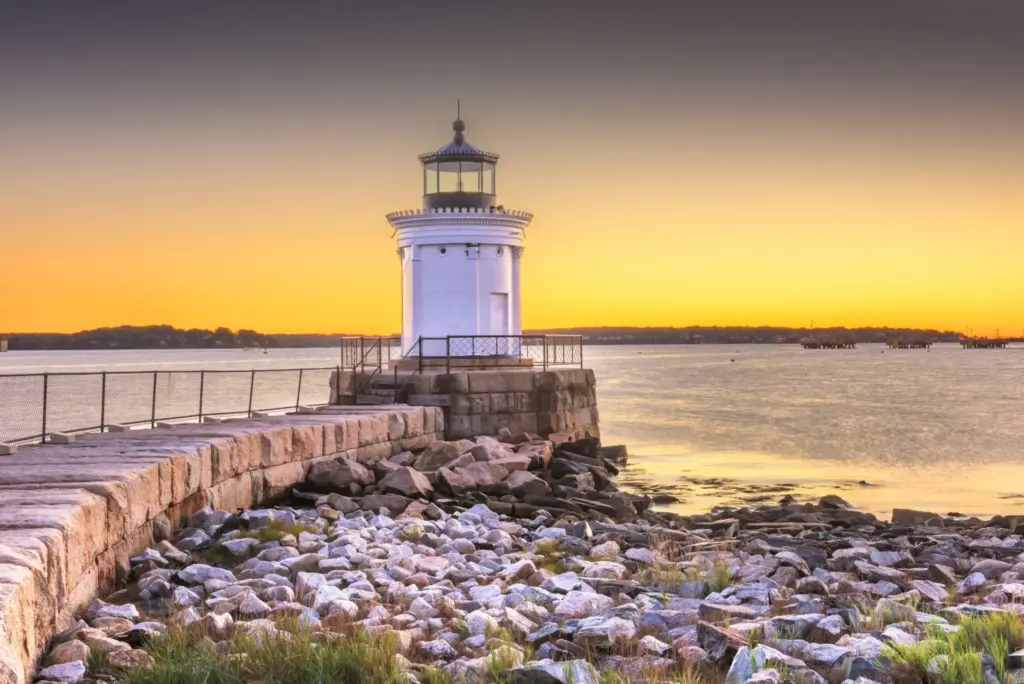
South Portland, Maine, USA with the Portland Breakwater Light at dawn.
Portland Has Numerous Naval Defenses
Beyond the commercial bustle, Portland has also played a strategic role in naval and military history.
In 1775, the British Navy bombarded Portland (then Falmouth) setting a huge part of the city ablaze. It became painfully apparent how vulnerable the port was.
The city built numerous forts to protect the harbor and to ensure goods could get in and out of the port safely. The forts within the city include:
- Fort Gorges
- Fort Preble
- Fort Scammel
During the War of 1812, forts were also built on Peaks Island, Cushing Island, and Great Diamond Island, all of which are now historic sites.
After the construction of the forts, no enemy forces ever attacked Portland again.
During each of the American wars, and in times of international tension, Portland’s forts were manned. Today, however, they are no longer used for military service.
They are for the people of Maine and visitors to enjoy. Some are even parks.
If independent adventure is more your speed, you can count on Summer Feet for all your Portland Maine Bike Rental needs.
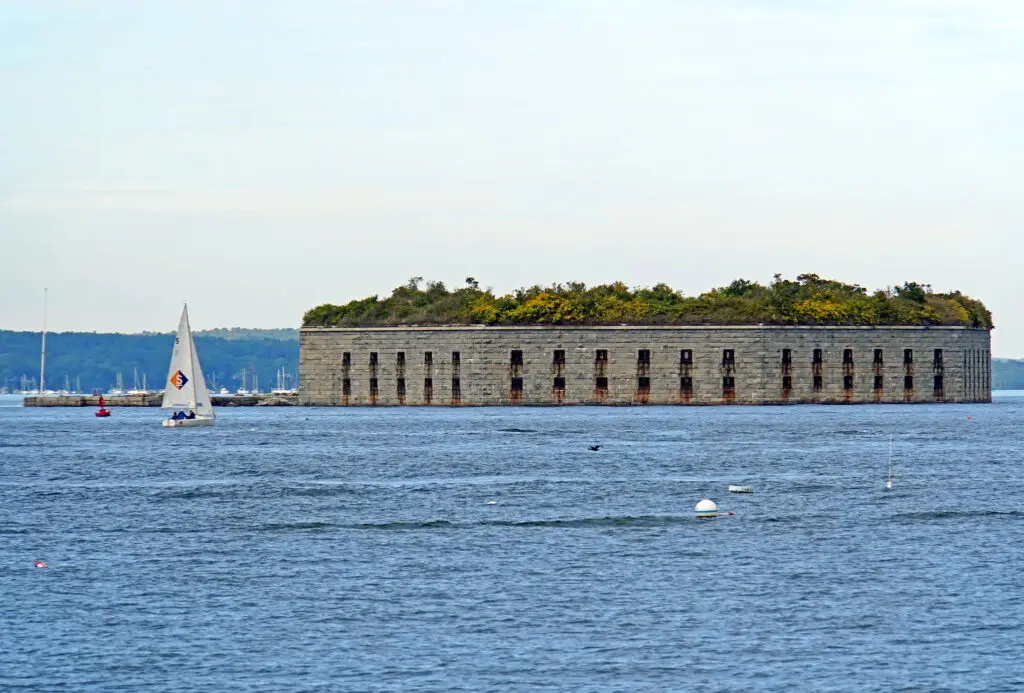
Changing Tides: Decline and Revival
From the 1920s onwards, the wharves in Portland’s port handled increasingly fewer shipments. New trade routes and innovative technologies changed the winds of the maritime industry.
As a result, the port area deteriorated over the following decades, albeit with a brief boom during the Second World War.
However, a renewal process reversed years of economic depression, and the Old Port neighborhood, along with other parts of downtown, experienced a resurgence.
The historically industrial Bayside also witnessed rapid development starting in the 1990s.
Today, the echoes of Portland’s maritime legacy still resound. On our Maine walking tours, you can step back in time and immerse yourself in this fascinating history.
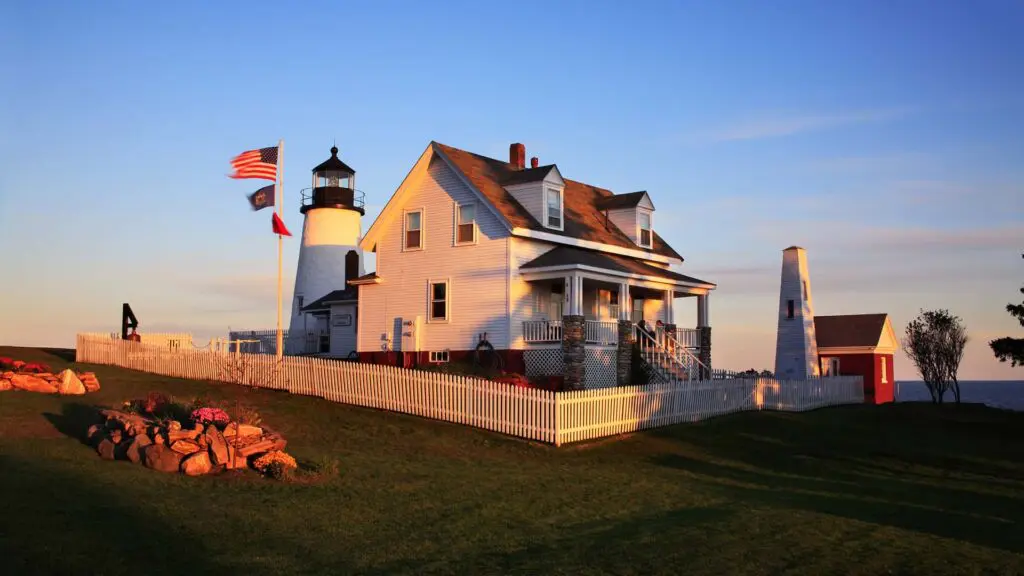
Join One of our Portland Tours and
Discover Our Maritime History!
Portland’s maritime history isn’t just a relic of the past — it’s a living, breathing part of our captivating city’s identity.
Whether you prefer walking tours in Maine or Maine bicycle tours, Summer Feet is here to help you discover it!
Remember, if you have any questions for us, please don’t hesitate to get in touch.
Want to continue learning about Portland, Maine? Read our 10 Best Things to Do in Portland, Maine next.

